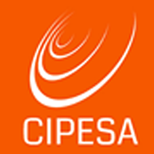Construction of the 13,700 km Sea Cable System (SEACOM, www.seacom.mu) is underway and expected to reach completion by June 2009. The cable will comprise two fibre pairs, connecting South Africa, Mozambique, Madagascar, Tanzania and Kenya, to India and Egypt, with an option for connectivity into the UAE and Djibouti. CIPESA/Fibre-for-Africa (www.fibreforafrica.net) spoke to SEACOM Ltd. president Brian Herlihy.
Q. Who are the partners in SEACOM and how much are they investing in the network?
SEACOM has publicly announced its investors, it is 75% African owned with Agha Khan Economic Development Group (IPS) out of East Africa, Venfin, Convergence Partners and Shanduka group from South Africa. The remaining 25% is owned by Herakles Telecom, our New York based development company. Herakles management is also the management of Sithe Global (developer and investor of the Bujagali Hydro in Uganda) and Global Alumina, a $4.5 billion alumina refinery in Guinea.
Q. What do you envisage will be the prices for SEACOM’s bandwidth?
SEACOM’s pricing is the equivalent of $100 to $170 per Mb/s per month.
Q. In what ways will SEACOM be competitive compared to other fibre initiatives in the region, such as TEAMS and EASSy?
SEACOM is the only cable offering a PoP (Point of Presence) to PoP solution for Europe and Asia. I believe this is a large advantage and the purchase of onward capacity is a difficult process. SEACOM understands that TEAMS has very competitive pricing to Fujairah. SEACOM believes that its pricing to Europe is more competitive than EASSy’s pricing to Sudan.
Q. How will SEACOM assure affordability of services, and how has it been responsive to NEPAD’s calls for Open Access?
SEACOM has structured each landing point as an open access unit. This has been accomplished in two formats. First, the capital cost of the landing stations is a sunk cost for SEACOM, in other words SEACOM does not seek to recover the investment costs of the landing station through co-location fees.
Secondly, each landing station is built with an additional building whereby customers can put their own equipment at the cable station. SEACOM has published its prices through many different forums. The pricing is an 80% discount over current satellite charges and is the only cable offering capacity directly from a PoP in Nairobi to a PoP in Europe or India without the requirement to purchase onward capacity.
Q. Would you say the fact that SEACOM is not a local company in the countries where it is going to land fibre places it at a disadvantage compared to other cable systems such as EASSy and TEAMS?
Depending on each country’s regulatory regime, SEACOM has either established a local entity to operate the cable or partnered with an existing cable. SEACOM will bring experienced operators to the cable to ensure that the local entities maintain world class quality service.
Q. What are your comments to the assertion that it is not viable for the eastern coast of Africa to have three competing cables? Do you see a need for the cables to cooperate in some areas rather than duplicate everything?
The current capacity demand on the East Coast of Africa is very small. However, we believe that the future demand will experience exponential growth. Having said that, the three competing systems would create a large over-supply, which could create a short-term glut.
Q. What is Herakles Telecom and where does it operate from?
Herakles Telecom is a development company set in New York. The management is the same management that works with Sithe Global (www.sitheglobal.com) and Global Alumina (www.globalalumina.com)
Q. There has been talk that Herakles staff were involved in the Africa One project which did not materialise, and that they collected money from African telecom, which money has purportedly not been refunded. How true is this, and how could it affect SEACOM’s operations?
I have noted the slander towards myself and JP (Jean Pierre de Leu) out of Kenya. I can confirm that both of us worked and spent many years with Africa ONE for the hope that this project would go forward. However, neither of us were principals of this project and left the project from 2002. It was our understanding that the only countries that made a deposit were Eritrea and Mauritania.
We understand that the sales person for Eritrea was able to help that money be returned. It should be noted that the Africa ONE name was sold by AT&T to a private investment group in 1998 and it was this group who was responsible for that money. ¬JP and myself have nothing to do with this entity. Since Africa (2002) I have worked as a developer on over $5 billion of projects in Africa, each of which have excellent reputations and large impacts in their respective countries, including Bujagali in Uganda.
– January 2008
